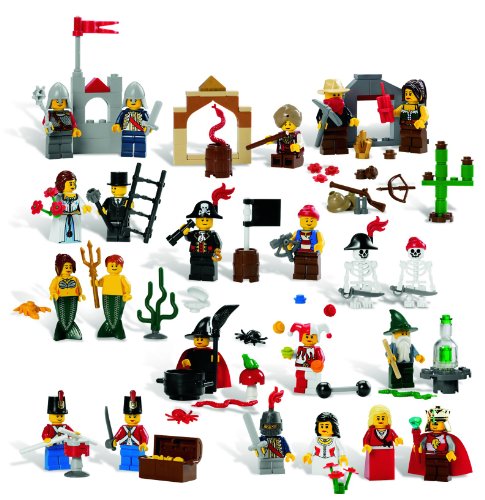LEGO Bricks provide such an opportunity for learning, collaboration, and enjoyent.
A few years ago I taught a popular 10 week LEGO class.
We built with bricks each class meeting, played LEGO Bingo, learned about how to speak effectively in front of of a group, and just had a blast being together.
I wanted the children, however, to come away with some solid building techniques that would help them build strong creations once they were at home.
Have you heard of the Interlocking Brick Technique?
The Little Brick Schoolhouse Glossary defines interlocking as:
stacking LEGO bricks by overlapping bricks from one row on top of another row, in the same way that brick houses and block walls are built. By interlocking bricks, you can't remove a single brick without removing others. Interlocking bricks makes for a strong and stable structure.
We first heard of this technique at the Lego Discovery Center in Atlanta. The kids attended a workshop with a LEGO masterbuilder and it was all about this technique. He built a column of bricks so strong he could stand on it, because of the interlocking technique he used.
It's very easy - just make sure your bricks overlap (just like the picture of the brick wall above). Don't let any of their seams match up.
The Lesson
To teach the lesson to my class I told them we were going outside to --- you guessed it -- sit in front of a BRICK WALL.
As the children were sitting in front of the wall I simply asked them what they noticed about the bricks. Why did the bricks overlap in this way? Why did they think the builders had chosen to interlock the bricks instead of just stacking them?
The short answer: It makes a building stronger.
I dumped basic LEGO bricks on the sidewalk and told them them to build me their best example. Some kids worked together, others chose to be on their own. Some chose a long wall, some chose to go tall. It was fun to watch.
There is something magical about watching a group of excited children so focused on a goal.
They were very proud of what they had created.
Testing the Theory
Would this theory actually work?
The kids wanted to stand on their creations to test it out.
Lo and behold....
What a fun day this was. The students in my class told me it was their SECOND favorite day - the first was Minifig Day!
If you're interested in downloading the 10 Week LEGO Class plans they are available to you for free!
LEGO Supplies
We're not much for fancy LEGO sets here. We like basic LEGO bricks, base plates, doors, windows, and minifigs. You can do so much with these basic supplies, and your child's creativity will soar!



























